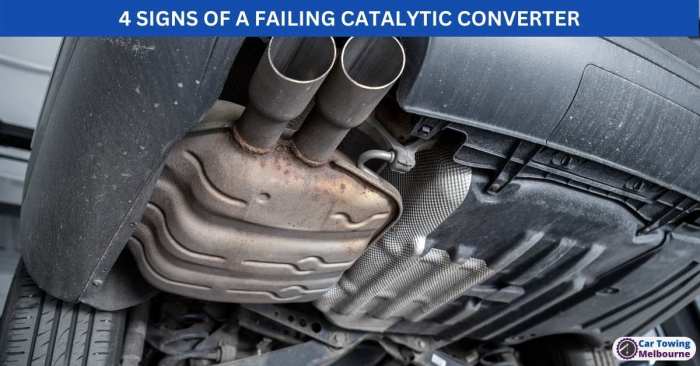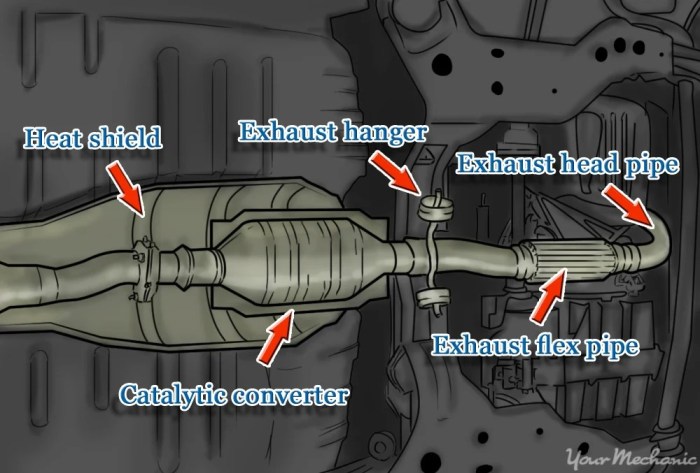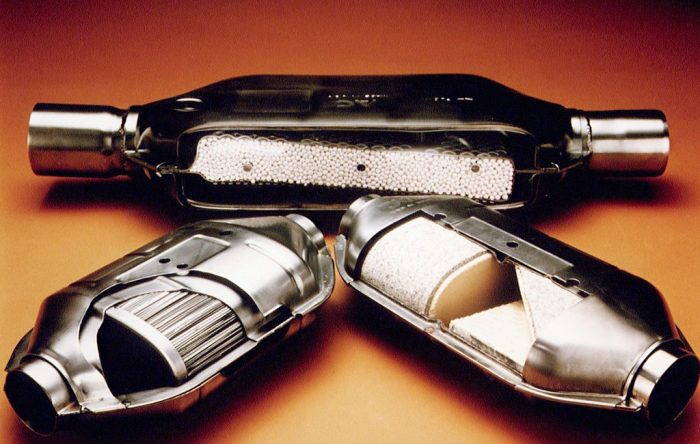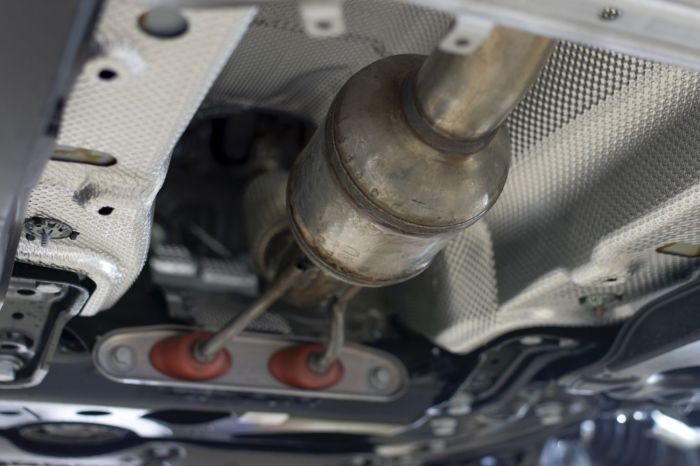Ignoring warning signs from your vehicle can lead to costly repairs down the line. Understanding the subtle cues your car provides is crucial for preventative maintenance. This guide focuses on ten common symptoms indicating a failing catalytic converter, a vital component of your exhaust system responsible for reducing harmful emissions. Recognizing these symptoms early can save you money and ensure the longevity of your vehicle.
A malfunctioning catalytic converter not only impacts your car’s performance and fuel efficiency but also contributes to environmental pollution. By understanding the underlying causes of these symptoms and the potential consequences of neglecting them, you can make informed decisions about vehicle maintenance and repair.
Identifying the 10 Symptoms

A malfunctioning catalytic converter can significantly impact your vehicle’s performance and emissions. Recognizing the warning signs early can prevent further damage and costly repairs. Understanding the underlying causes of these symptoms is crucial for accurate diagnosis and effective solutions.
Ten Common Symptoms of a Failing Catalytic Converter
The following list details ten common symptoms indicative of a failing catalytic converter. Early detection of these issues can save you significant expense and maintain the longevity of your vehicle.
| Symptom | Description | Cause | Potential Severity |
|---|---|---|---|
| Reduced Engine Power | The engine feels sluggish or lacks acceleration. | A clogged converter restricts exhaust flow, reducing engine efficiency. The backpressure increases, hindering the engine’s ability to expel exhaust gases properly. | Moderate to Severe |
| Check Engine Light (CEL) Illumination | The illuminated CEL is often accompanied by a diagnostic trouble code (DTC) related to the catalytic converter or oxygen sensors. | The onboard diagnostic system (OBD-II) detects issues such as insufficient catalytic conversion or sensor malfunctions related to converter operation. | Moderate to Severe |
| Poor Fuel Economy | A noticeable decrease in miles per gallon is observed. | Restricted exhaust flow from a clogged converter forces the engine to work harder, consuming more fuel. | Moderate |
| Exhaust System Noise | Unusual noises, such as rattling or buzzing, emanate from the exhaust system. | Internal components of the converter, such as the substrate or catalyst material, may be breaking down and rattling within the converter housing. | Moderate |
| Strong Smell of Rotten Eggs | A pungent sulfurous odor is detected from the exhaust. | Unconverted hydrogen sulfide gas, a byproduct of incomplete combustion, is released into the exhaust stream due to converter malfunction. | Moderate |
| Visible Damage to the Converter | Physical damage, such as dents or holes, is apparent on the converter housing. | Impact from road debris or other external forces can compromise the converter’s structural integrity. | Severe |
| Black Soot from Exhaust | Excessive black soot is emitted from the tailpipe. | Incomplete combustion due to converter failure leads to the release of unburnt hydrocarbons, manifesting as black soot. | Moderate |
| Rough Idling | The engine idles unevenly or shakes excessively. | Backpressure from a blocked converter affects the engine’s smooth operation, leading to rough idling. | Moderate |
| Overheating Engine | The engine temperature gauge shows unusually high readings. | Restricted exhaust flow can cause the engine to overheat as heat is not efficiently expelled. | Severe |
| Failing Oxygen Sensors | Oxygen sensor readings become erratic or inaccurate. | A failing converter can cause inaccurate readings from the oxygen sensors, as it does not effectively convert harmful emissions. | Moderate |
Diagnosing a Failing Catalytic Converter

Pinpointing a failing catalytic converter can be tricky because its symptoms often overlap with other vehicle issues. A thorough diagnostic process is essential to avoid unnecessary repairs and ensure the correct problem is addressed. This section details how mechanics differentiate a failing catalytic converter from other problems and the steps they take to confirm the diagnosis.
Diagnosing a failing catalytic converter requires careful comparison of symptoms with those of other potential mechanical problems. Many issues can manifest similarly, leading to misdiagnosis if not properly investigated. For example, a failing oxygen sensor can cause similar performance issues and engine codes as a failing catalytic converter. Similarly, problems with the ignition system, fuel injectors, or even a simple vacuum leak can mimic some of the symptoms.
Comparing Catalytic Converter Symptoms with Other Vehicle Problems
A failing catalytic converter often presents with reduced engine power, poor fuel economy, and a rattling or buzzing sound from the exhaust system. However, these symptoms are not exclusive to a failing catalytic converter. A clogged exhaust system, for instance, can also cause reduced engine power. Poor fuel economy can stem from a variety of issues, including faulty fuel injectors, air leaks in the intake system, or even simply driving habits. A rattling sound from the exhaust might be due to a loose heat shield, rather than a failing catalytic converter. The key is to examine the complete picture of symptoms and use diagnostic tools to pinpoint the exact cause. For example, while both a failing catalytic converter and a clogged exhaust system might cause reduced power, a clogged exhaust would also likely exhibit a significant backpressure reading during a pressure test.
Diagnostic Procedures Used by Mechanics
Mechanics employ several diagnostic procedures to confirm a failing catalytic converter. These include visual inspections, pressure tests, and emissions testing. A visual inspection might reveal physical damage to the converter, such as cracks or holes, or excessive buildup of soot and debris, indicating a possible blockage. A pressure test measures the exhaust backpressure. Elevated backpressure is a strong indicator of a clogged catalytic converter. Finally, an emissions test measures the levels of pollutants in the exhaust gases. Higher-than-normal levels of hydrocarbons, carbon monoxide, or unburnt fuel are often indicative of a catalytic converter malfunction. Further, a scan tool can detect specific diagnostic trouble codes (DTCs) related to the catalytic converter’s efficiency, providing further confirmation. For example, a P0420 code often indicates a problem with the catalytic converter’s efficiency.
Flowchart for Diagnosing a Catalytic Converter Issue
The following flowchart Artikels the steps a mechanic might follow:
- Step 1: Review Symptoms and Obtain Vehicle History: Note all reported symptoms (reduced power, poor fuel economy, strange noises, check engine light). Gather information on the vehicle’s maintenance history.
- Step 2: Visual Inspection: Inspect the catalytic converter for physical damage (cracks, holes, excessive soot).
- Step 3: Exhaust Backpressure Test: Measure exhaust backpressure using a pressure gauge. High backpressure suggests a blockage.
- Step 4: Emissions Test: Perform an emissions test to measure levels of hydrocarbons, carbon monoxide, and unburnt fuel. Elevated levels indicate a potential problem.
- Step 5: OBD-II Scan: Use an OBD-II scanner to retrieve diagnostic trouble codes (DTCs). Codes related to the catalytic converter (e.g., P0420) confirm the diagnosis.
- Step 6: Diagnosis Confirmation: Based on the results of the above steps, confirm whether the catalytic converter is indeed failing or if another component is the source of the problem.
Understanding the Impact of a Failing Catalytic Converter

A malfunctioning catalytic converter has significant consequences, impacting both your vehicle’s performance and the environment. Ignoring the problem can lead to escalating issues and costly repairs down the line. Understanding these impacts is crucial for responsible vehicle ownership and environmental stewardship.
The consequences of a failing catalytic converter extend beyond simply impacting your vehicle’s performance. There are significant environmental and economic repercussions associated with driving a car with a damaged converter. The severity of these effects depends on the extent of the damage and the length of time the problem is left unaddressed.
Environmental Consequences
A properly functioning catalytic converter significantly reduces harmful emissions from your vehicle’s exhaust. When it fails, these emissions are released into the atmosphere unchecked. This leads to increased levels of pollutants like carbon monoxide (CO), hydrocarbons (HC), and nitrogen oxides (NOx), all of which contribute to air pollution and smog. These pollutants contribute to respiratory problems, acid rain, and damage to the ozone layer. For example, a single malfunctioning converter can release significantly more CO into the air than a properly functioning one, exacerbating air quality issues in densely populated areas. The long-term effects of increased pollution from numerous vehicles with failing catalytic converters are substantial and detrimental to public health and the environment.
Impact on Fuel Efficiency and Engine Performance
A failing catalytic converter can negatively affect your vehicle’s fuel efficiency and overall engine performance. A clogged or damaged converter restricts exhaust flow, leading to increased backpressure in the engine. This increased backpressure forces the engine to work harder, resulting in reduced fuel economy. You may notice a decrease in your car’s gas mileage, potentially leading to higher fuel costs. Furthermore, restricted exhaust flow can also lead to reduced engine power and potentially misfires, resulting in sluggish acceleration and a rough-running engine. In severe cases, this can even cause engine damage, leading to expensive repairs. For instance, a study conducted by [Name of reputable organization or study] showed a significant correlation between failed catalytic converters and a decrease in fuel efficiency of X% on average.
Short-Term and Long-Term Effects of Ignoring a Failing Catalytic Converter
- Short-Term Effects: Reduced fuel efficiency, decreased engine performance, illuminated check engine light, potential for rough idling.
- Long-Term Effects: Increased air pollution, catastrophic engine damage requiring costly repairs, potential failure of other engine components due to increased stress, and the need for complete catalytic converter replacement.
Ignoring a failing catalytic converter can lead to a cascade of problems. The initial symptoms, such as reduced fuel economy, might seem minor. However, neglecting these warnings can result in more severe and costly issues later on. The longer the problem persists, the more extensive and expensive the repairs become. Proactive maintenance and prompt attention to warning signs are essential for preventing major damage and maintaining both vehicle performance and environmental responsibility.
Final Review

Regular vehicle maintenance and prompt attention to warning signs are key to preventing costly repairs. A failing catalytic converter, while a significant issue, is often detectable through careful observation of your car’s performance and behavior. By understanding the ten common symptoms Artikeld in this guide, you are better equipped to identify potential problems early, minimizing environmental impact and ensuring the optimal performance of your vehicle. Remember, proactive maintenance is always more cost-effective than reactive repairs.